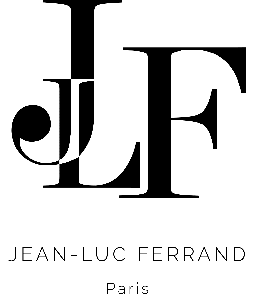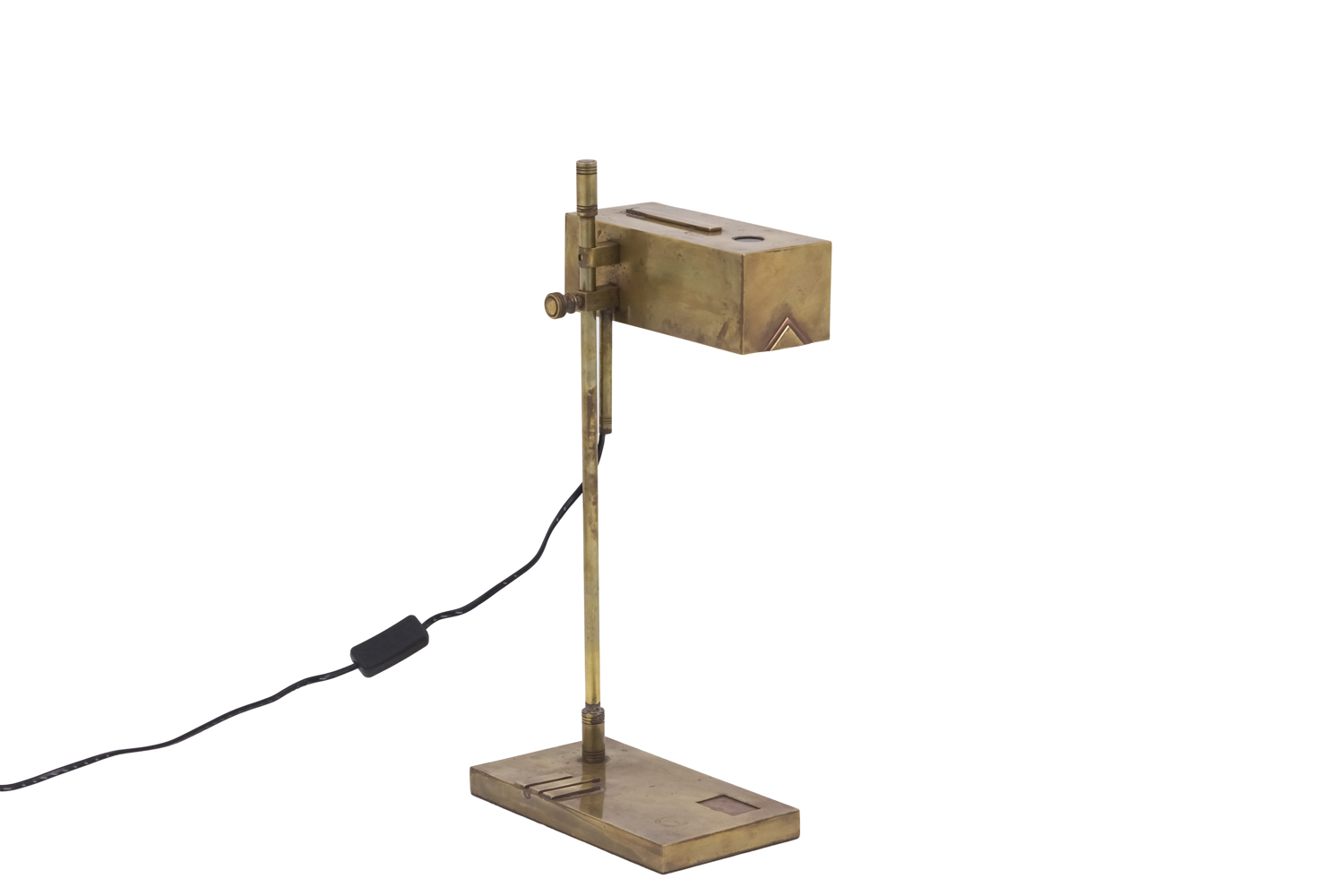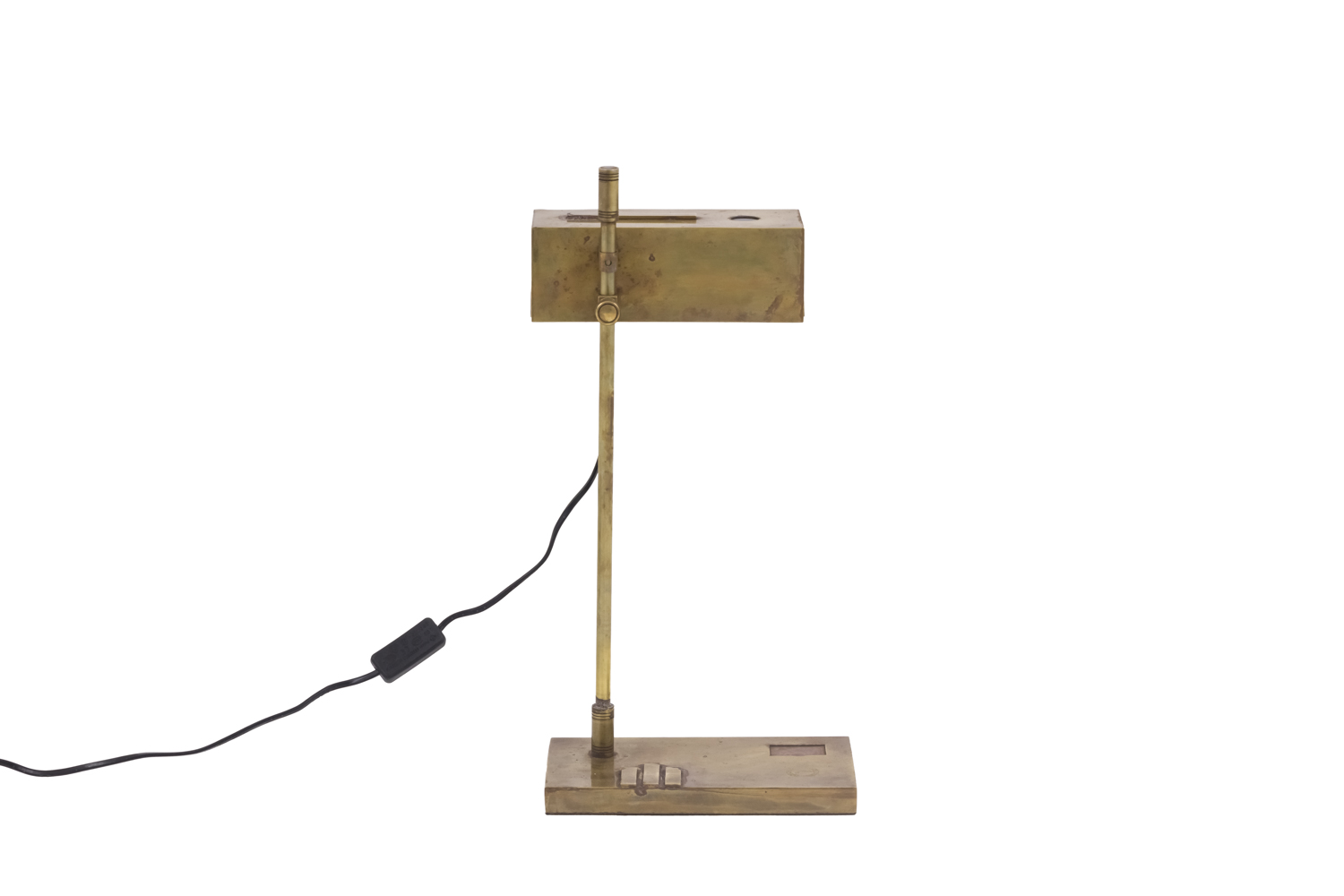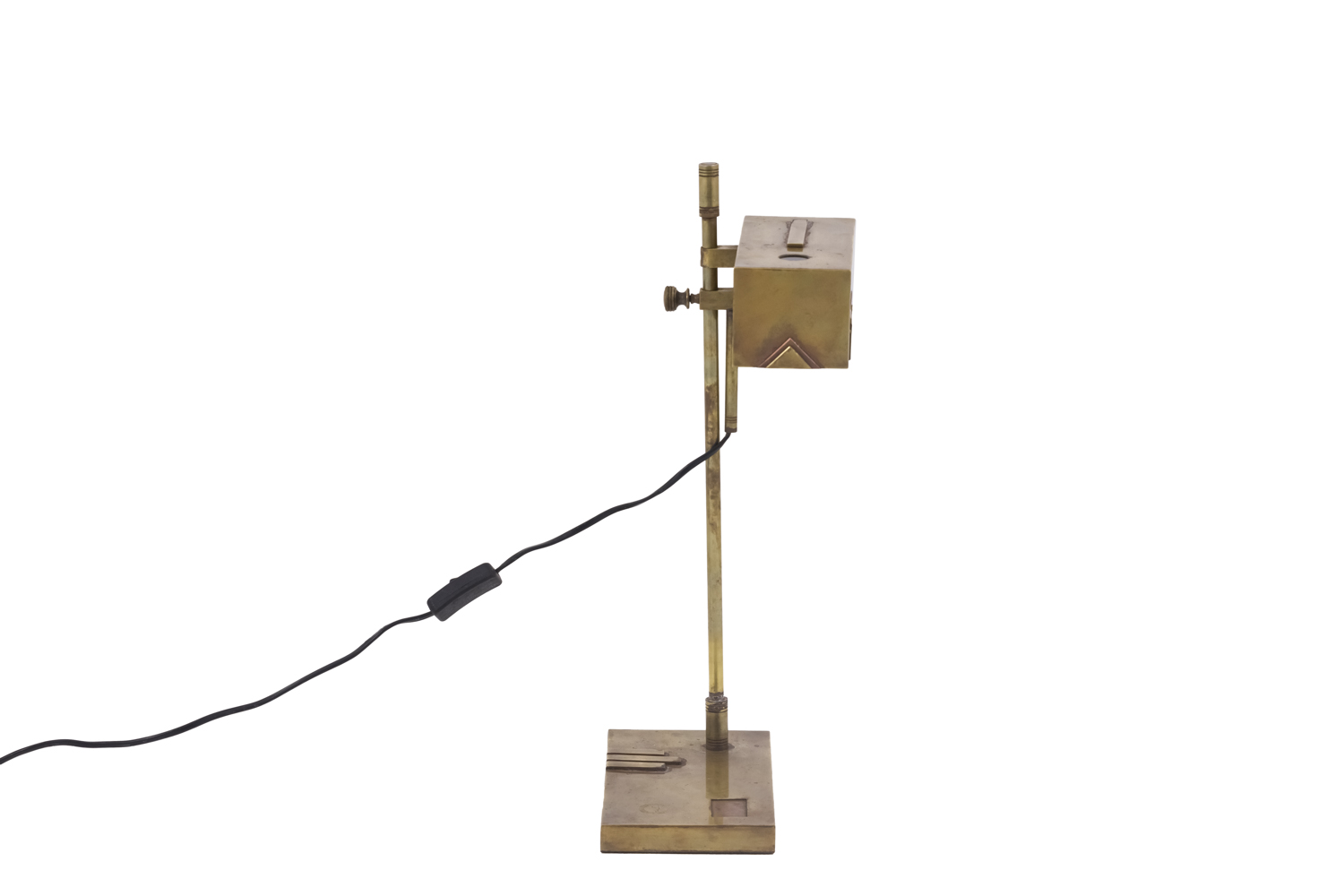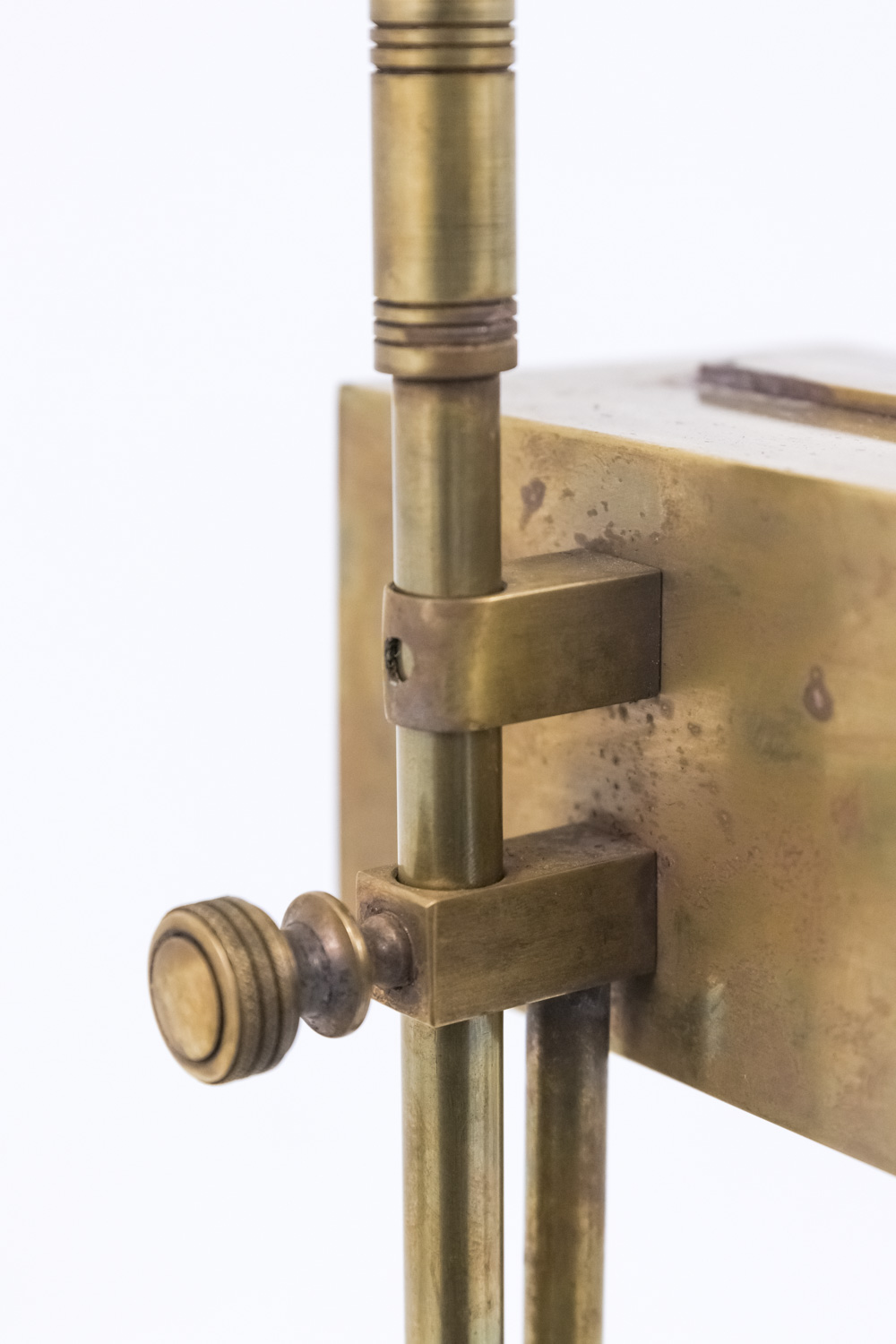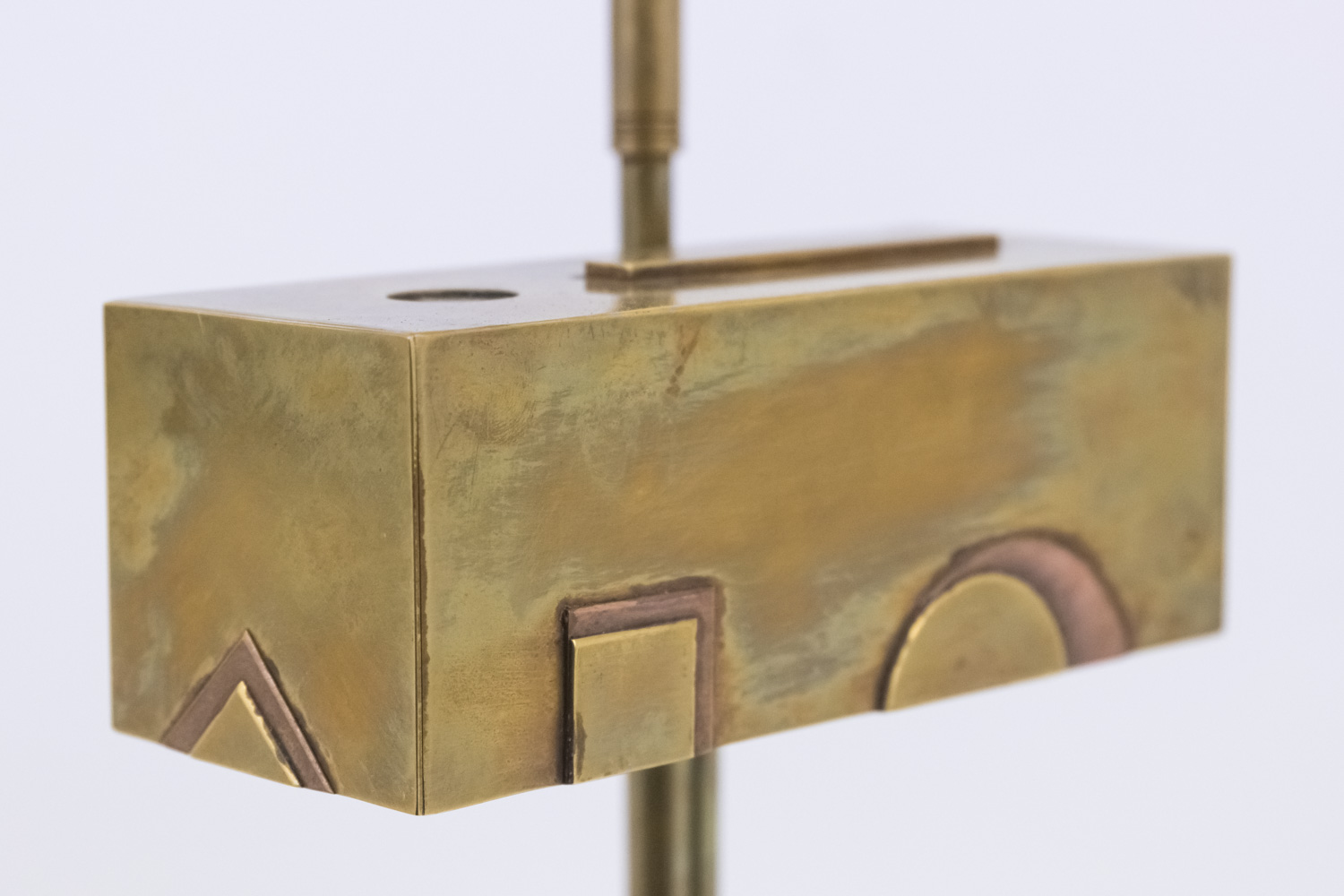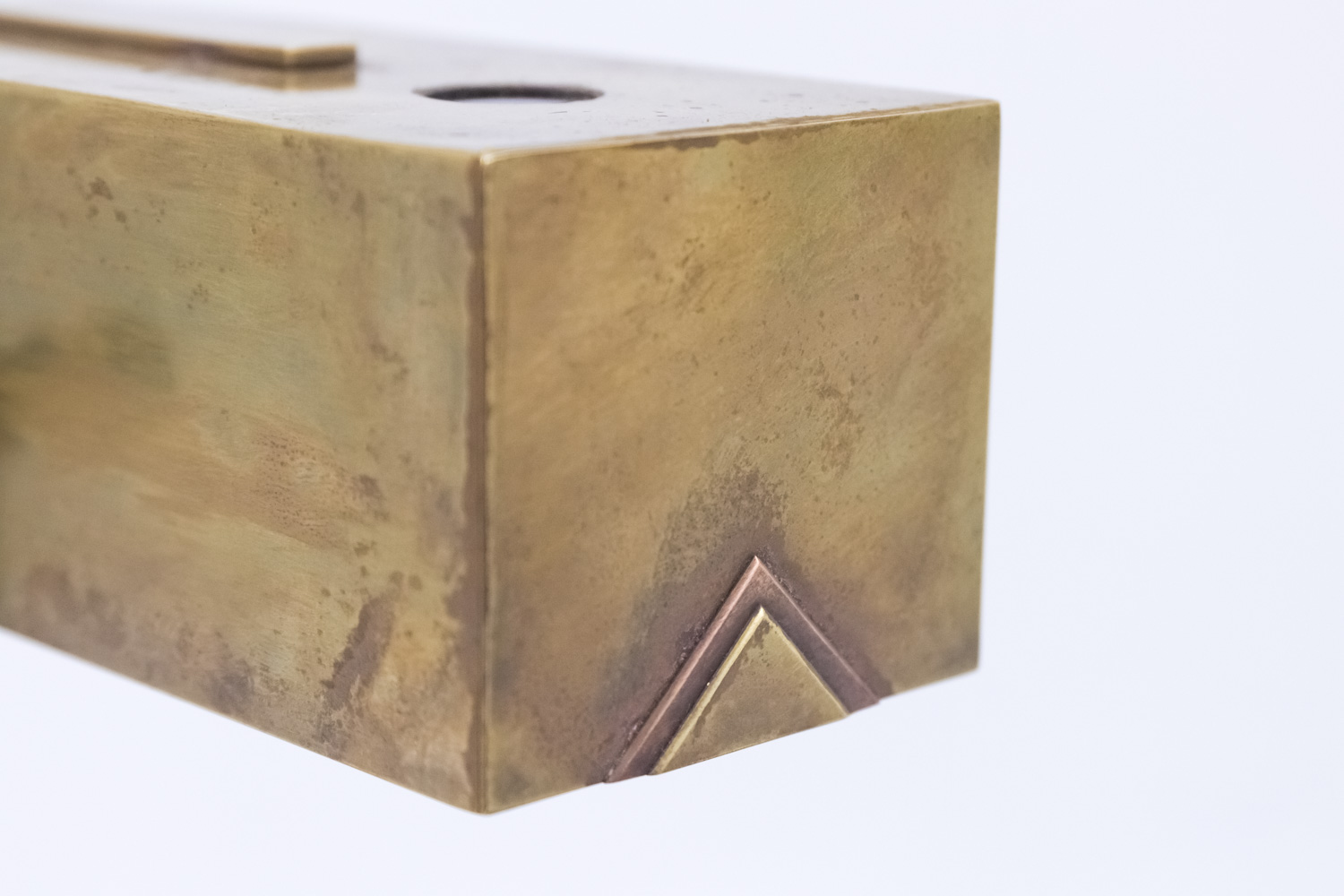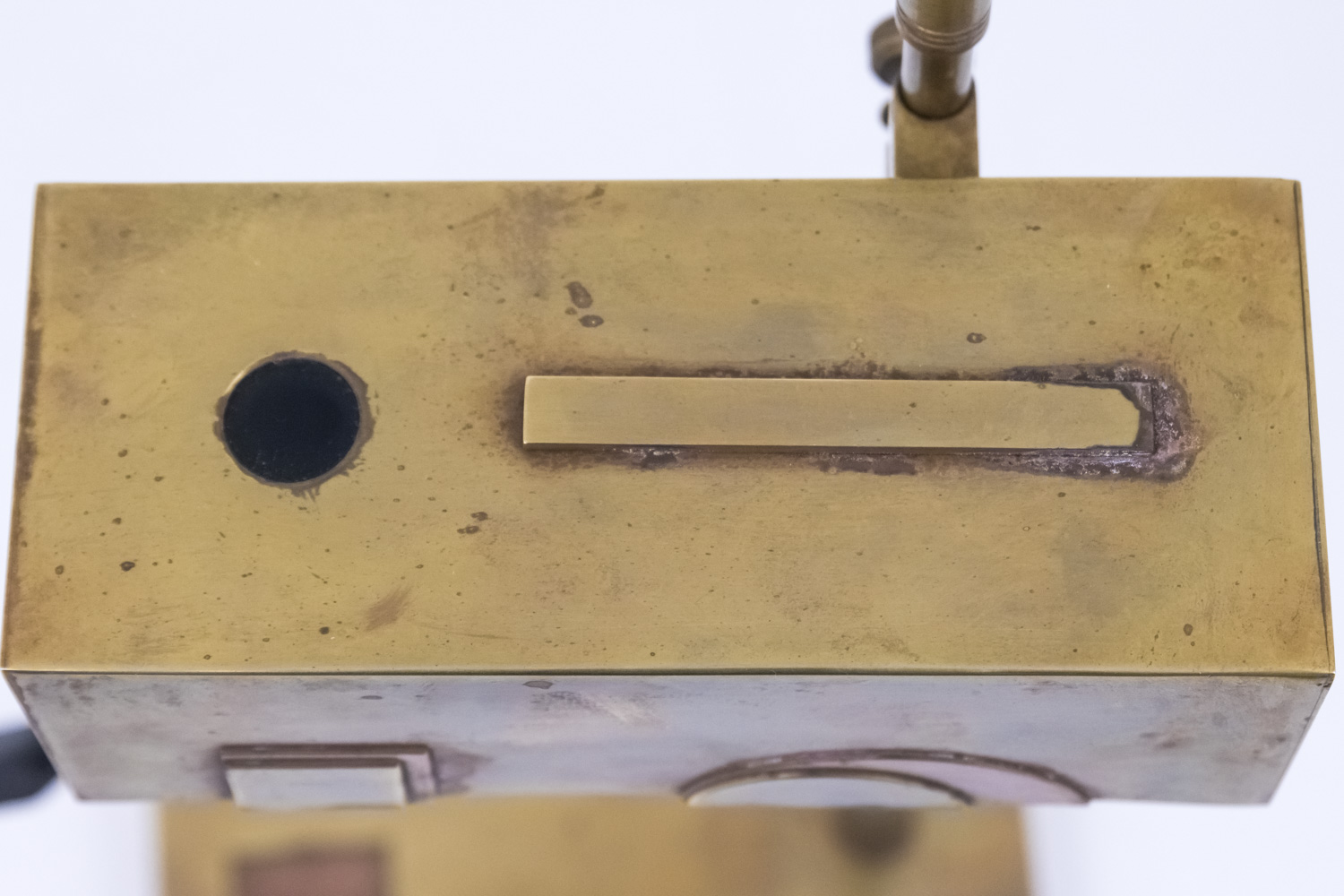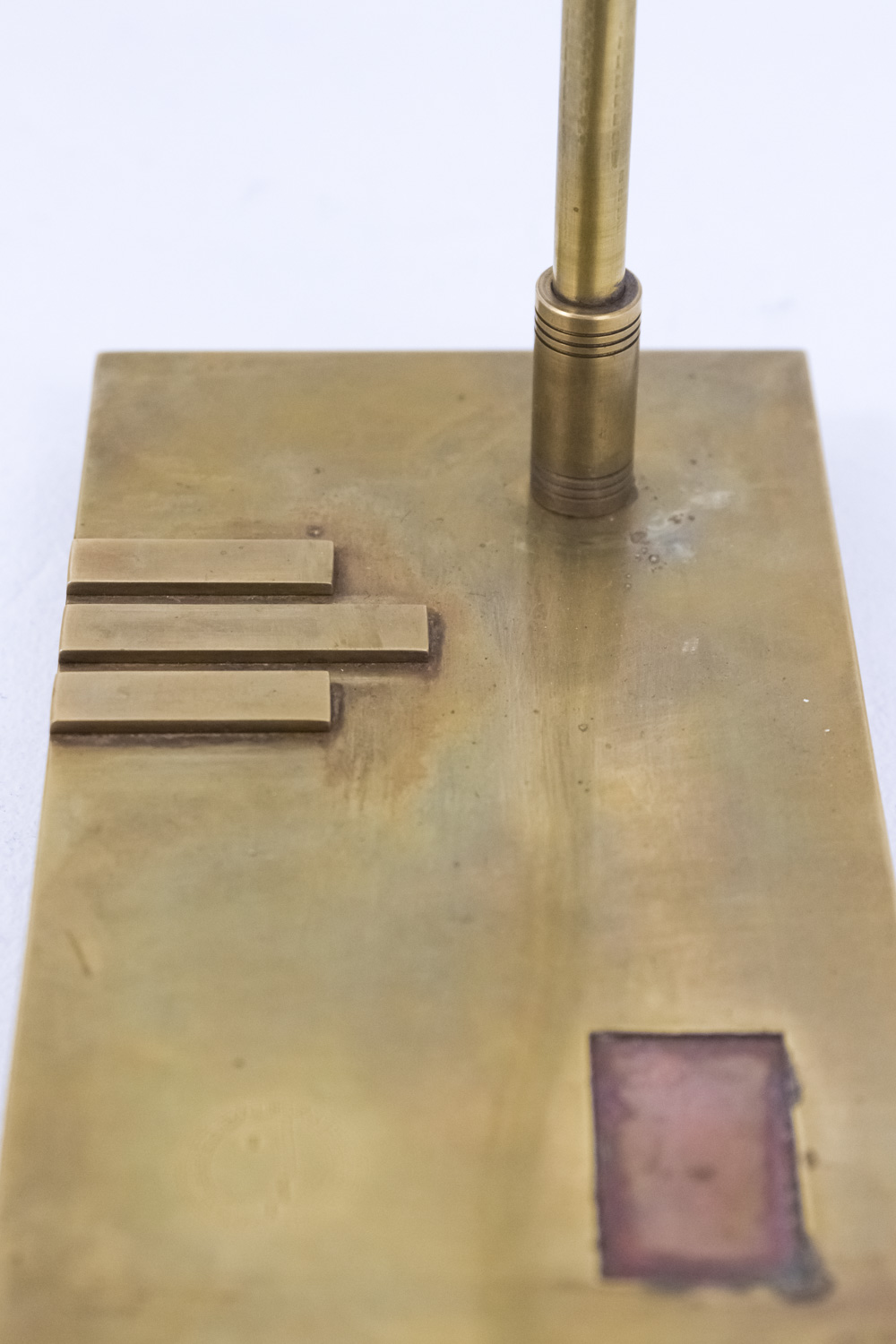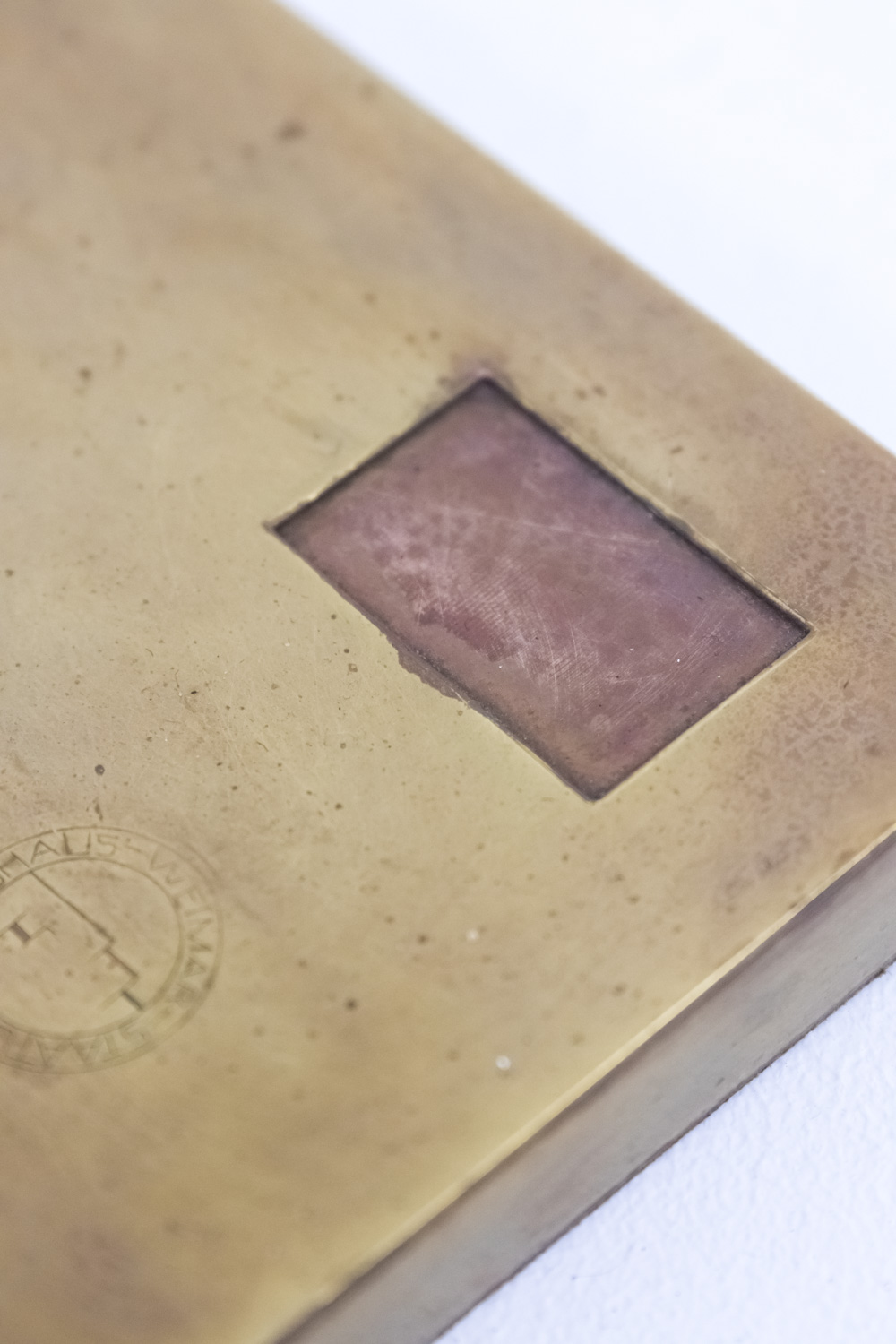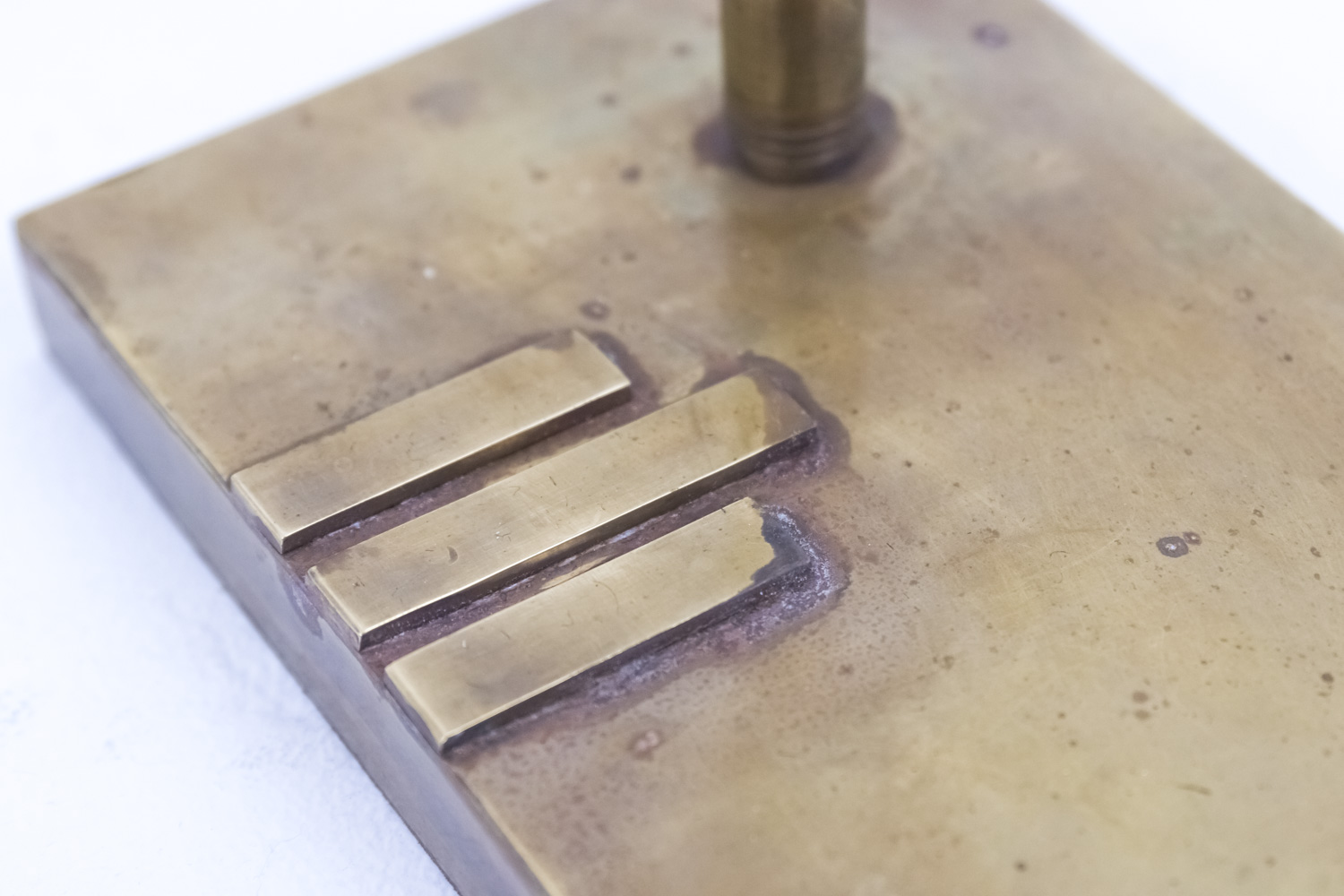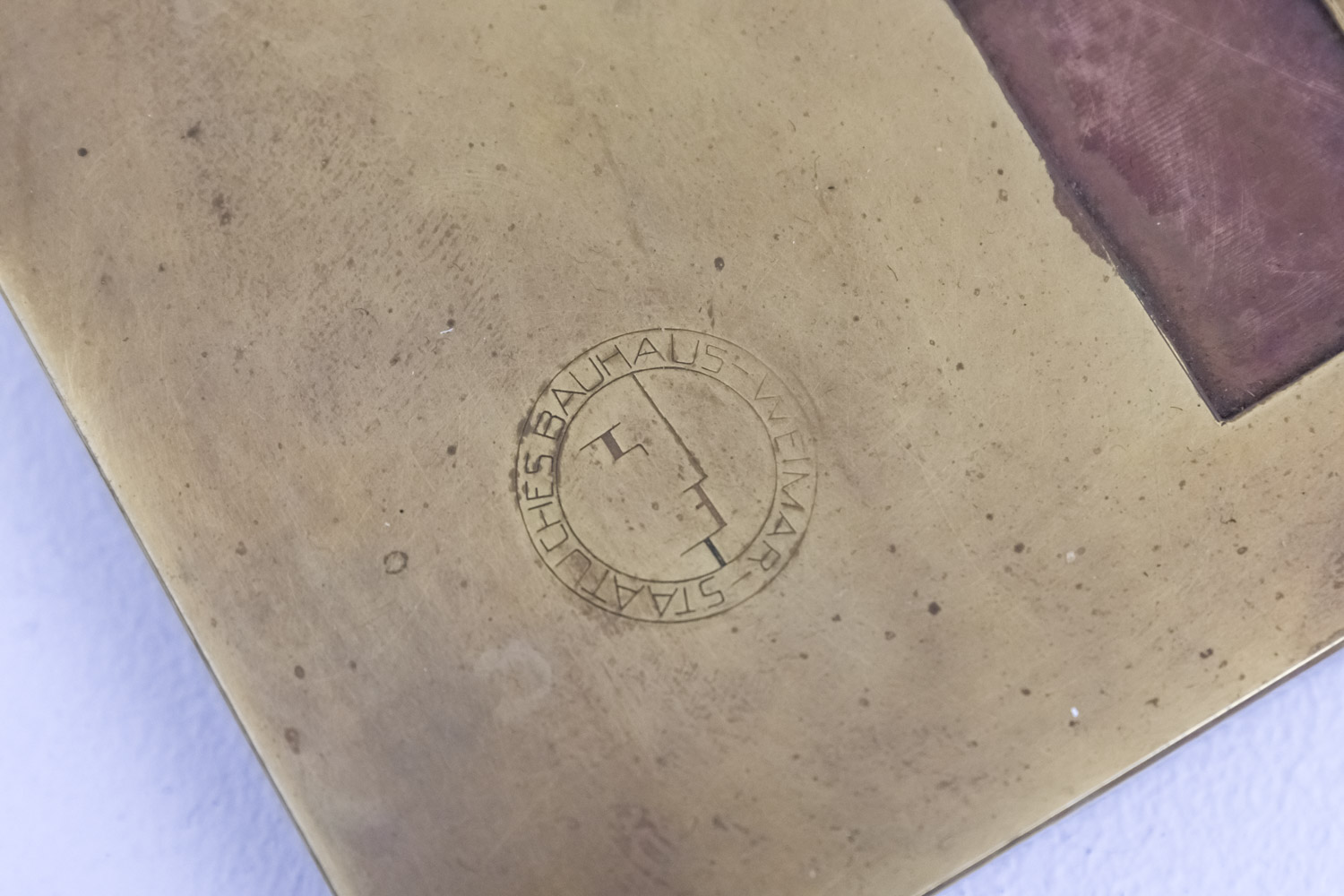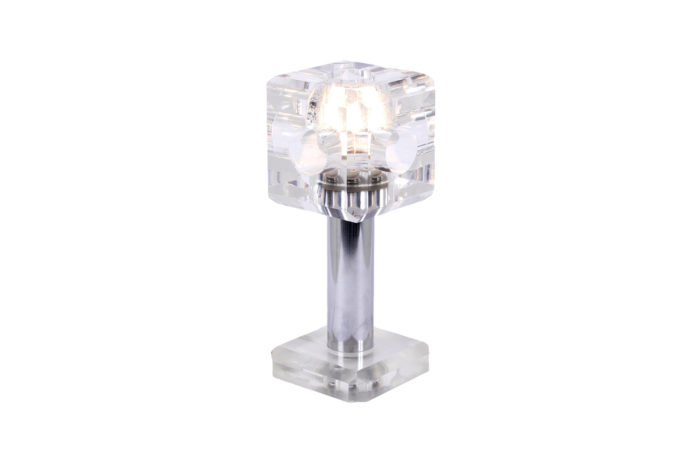Questions ? ![]() : +336.087.843.37 |
: +336.087.843.37 | ![]() contact3@jeanlucferrand.com | Buyer's Guarantee
contact3@jeanlucferrand.com | Buyer's Guarantee

Contact us and request a quote!
![]() : +336.087.843.37
: +336.087.843.37![]() : contact@jeanlucferrand.com
: contact@jeanlucferrand.com
![]() Shipping prices vary regarding destination. Contact us.
Shipping prices vary regarding destination. Contact us.
![]() 14 days free returns. Check out our: Terms and Conditions
14 days free returns. Check out our: Terms and Conditions ![]() |
| ![]()
![]() Question ? Call us +336.087.843.37.
Question ? Call us +336.087.843.37.
Bauhaus, Brass lamp, 1920s
1800,00€
Bauhaus lamp in brass standing on a rectangular base with applied motif of three gilt brass strips and a relief copper rectangle.
Shaft composed of a stick with cylindrical ends with chiselled rings.
Rectangular extendable lampshade in gilt brass and copper adorned with applied geometrical shapes such as triangles, half-circles and squares on sides and a rectangular strip and a relief oculus on the top.
“Staatliches Bauhaus-Weimar” stamp on the base.
Work realized between 1919-1933.
Functional electrical system.
Dimensions : H 50 x W 26 x D 19 cm.
Reference : LS4137531
The Bauhaus was an architecture school, design and applied arts created in Germany in 1919.
It was founded at Weimar thanks to the combination of the Decorative Arts School and the Beaux-Arts Academy of Weimar, and managed by Walter Gropius, a renowned architect, who wanted the manufacture to become a social, symbolic and intellectual experience. This innovative place confronted architecture, design, photography, dance, etc. without distinction between the craftsman and the artist.
The school students created objects, furniture and artworks in a functionalist conception linked to aestheticism, convenience and economy of means. Indeed, the production was often serial and industrial, thanks to a policy opening up art, technique and innovation.
The apprentices received lessons from great artists and architects from the beginning of the 20th century such as Paul Klee, Oskar Schlemmer, Vasilly Kandinsky or Marcel Breuer.
In 1925, the Bauhaus moved to Dessau due to political changes in Weimar that caused a decreasing of public subsidies for the school. Gropius left his directorship and was replaced by the architect Hannes Meyer and the Bauhaus policy took a true constructivist turn and moving towards industrialization. At this period, the form follows to the function; the item was considering in a scientific way for practical and economic reasons, for popular consumers.
From 1930, the architect Mies van der Rohe managed the Bauhaus and transformed it in an architecture school, where applied arts are reduced to simple series production. In 1932, the school moved a second time in Berlin but the rise of Nazism forced the Bauhaus to close in 1933.
The functionalist and industrial approach of the Bauhaus got a large impact on the industrial design of the 20th century and particularly on the Ulm School (1955-1968), which wished to build modern and pleasant living conditions thanks to a progressive approach of design. More largely, a wide range of the 20th century architecture and design was directly inspired by the Bahaus.
The Bauhaus logo stamped on the lamp was the reflection of the school principles. Indeed, the Bauhaus used for its logo, created by Oskar Schlemmer in 1922, a revolutionary, minimalist, geometrical typography, with solid colours and which the form reflected the function.
Sources :
C&P.FIELL, Design du XXe siècle, Taschen, 2018, Köln, pp.83 à 92
C&P.FIELL, 1000 lights, Taschen, 2015, Köln, pp.126 à 135
Out of stock
Contact devis transport / delivery costs :
Telephone / By Phone : +33(0)6 08 78 43 37
